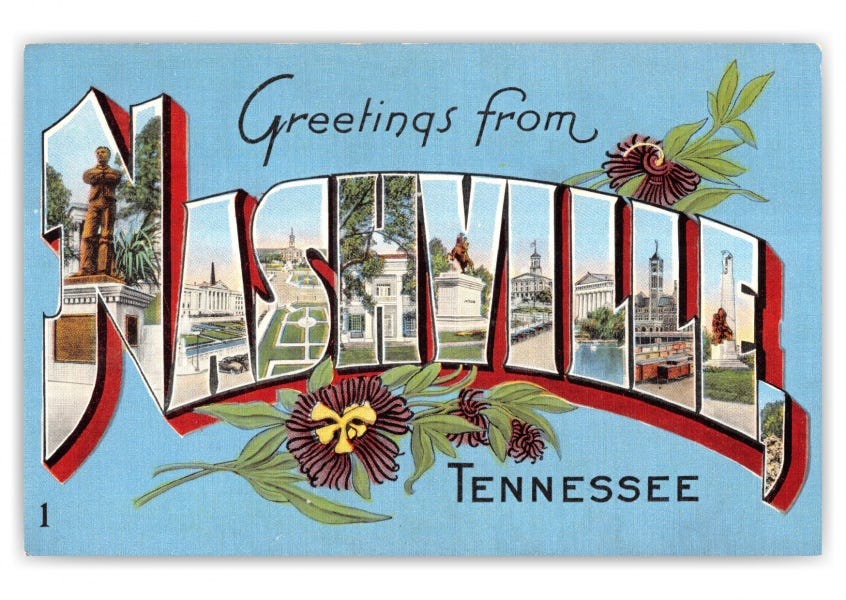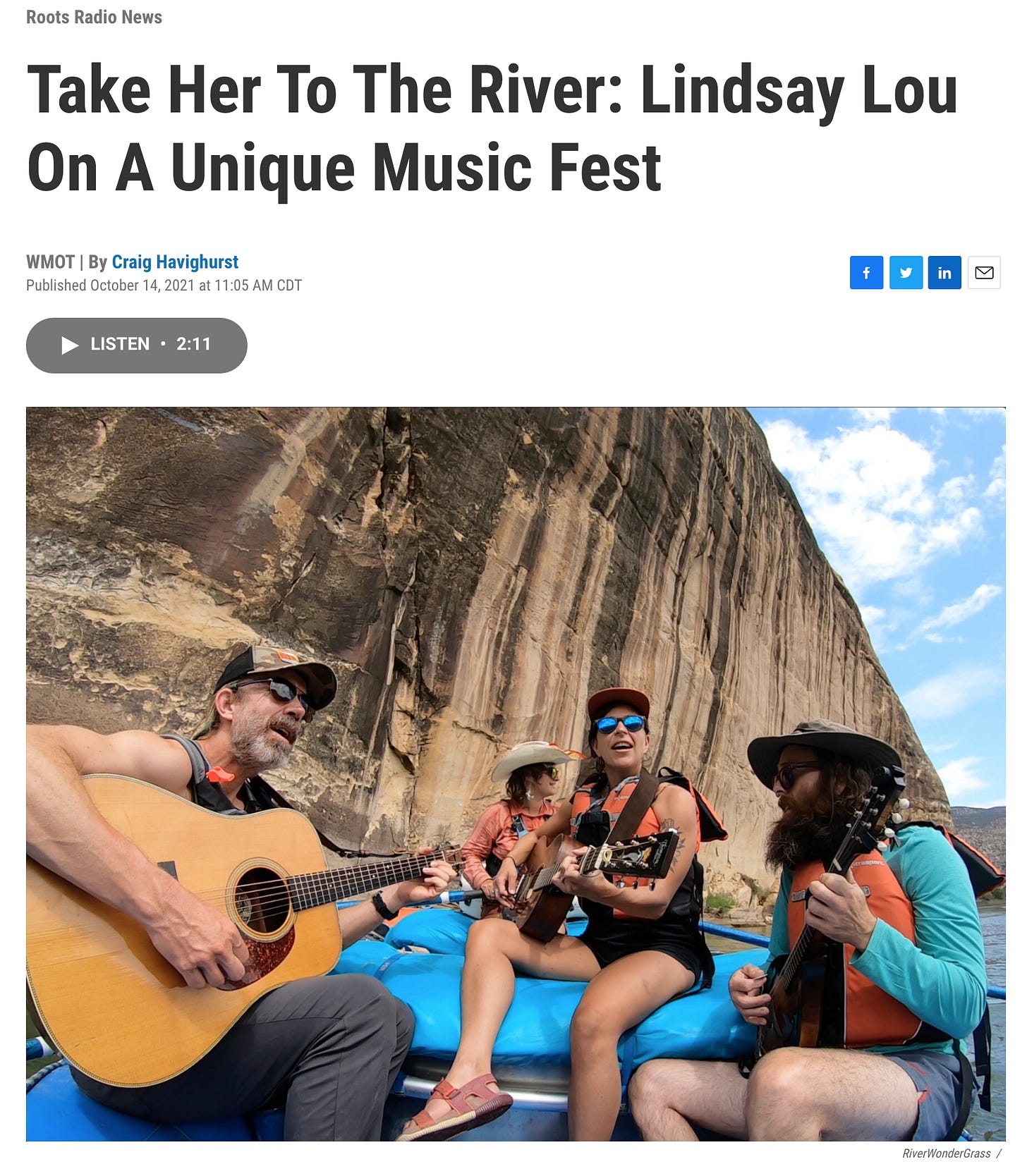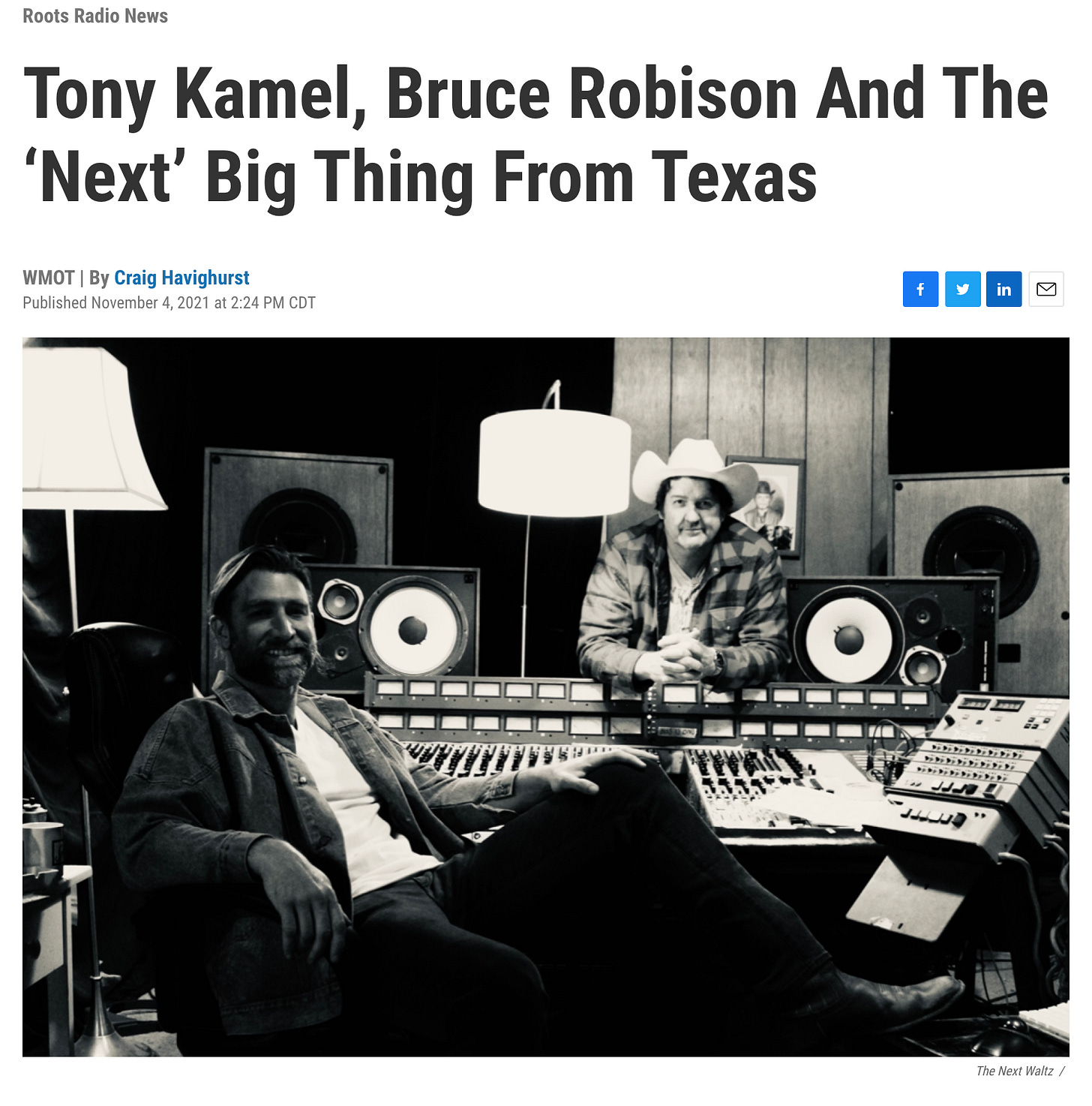I moved to Nashville twenty five years ago this week, on November 6, 1996. I was almost a decade into my life as a journalist, covering business. In my private time I was a roots music fan and amateur songwriter and guitar player. While I had no intention of attempting to become a professional musician, I wanted to partake of the Music City aura as a picker and fan, with little inkling I’d shift gears into music journalism. My plans at the time were about lifestyle and putting down roots. After living four years in Washington, DC and a year in Little Rock, AR, neither felt like home. I saw Nashville as a dynamic, friendly city that reminded me a bit of where I grew up in Durham, NC - with an amazing music scene stocked with my favorite bluegrass and country musicians. I spent my first night in town at the Station Inn. I was 30 years old.
The onset of changes that would radically transform Nashville from a sleepy town to a cultural and economic juggernaut had quietly begun, but it was hard to tell what the future held. They had just finished the Bridgestone Arena and the renovation of the Ryman. The Country Music Hall of Fame was a kitschy barn at the end of Music Row and Demonbreun Street still had its country music tourist gift shops. The Gulch was genuinely gulchy, with nothing to offer a visitor besides that world-class bluegrass club. If I’d been making a bet on a city with growth potential, count me as a savvy investor, but I was not thinking about that. I just loved the (late, great) Radio Cafe and the Ryman Auditorium and hoped to enjoy picking parties and the occasional small-time gig. And all that happened. I had fun and felt at home from the outset.
For the definitive account of my experience getting to know Nashville, I point you to this excerpt from my 2016 essay A City Of Works, commissioned by my friend Chuck Beard as the introduction to his anthology Based On: Words, Notes and Art from Nashville. That covers the beginnings of my work as a writer and my entree into the realms of Music Row history that led to my book about WSM and the birth of Nashville’s music business. Here, I’ll share some personal thoughts on how I see this place with hindsight and undimmed enthusiasm.
Has Nashville lost beautiful things in my time here? Of course. While it was never going to last in its most magical form, I feel blessed to have experienced a golden age on Lower Broadway, soon after the music scene got revived at Robert’s and Tootsie’s. I really did thrill driving over the Shelby Ave. bridge in its last years carrying vehicular traffic, looking down on the neon lights, parking free and walking into Wolfy’s where Jamie Hartford was throwing down with Ray Flacke on guitar. I floated on air soaking up the Telecaster picking of Redd Volkaert and Johnny Hiland with the Don Kelley Band. I loved hanging out and playing music at Windows On The Cumberland, from whose very tall warehouse windows, we watched a barge yard get demolished and an NFL stadium get built on the opposite bank.
That said, that creative destruction and new building never hit me as a harbinger of doom for all that was good and holy about Nashville. I’ve never been the “it was better back then” guy. I lived the ride as East Nashville came into its own, from rough and tumble beginnings, after 1998’s tornado. The Slow Bar near my Fatherland Street house was another flame that burned for a time but not forever. It became the 3 Crow Bar where I enjoyed some of the greatest conversations over craft beer of my life. Now, living in Melrose, I journey over to East Nashville for nights out, and it’s awesome. You can’t tell me Nashville has sold its soul with the American Legion, the Big Purple Building, The Groove, Grimey’s and Dee’s making culture and community. I like the new stuff - the Vandyke hotel and the Basement East and Smith & Lenz brewing company. Yes, housing is expensive, as it is in any growing place, but raised as I was around economists and environmentalists, I emphasize that the higher prices stem from desirability and demand, and that population density is a good thing. We want more high rise housing, because it’s better than the alternative, and you can’t decree that places stay the same just because you loved it best in 2006 or 2011 or last year. Viewed objectively, Nashville offers a richer quality of life than it did in 1996. And the future, including Madison’s changes and the Roots Barn that I’m involved in, looks bright.
Another happy trajectory has been Nashville’s worldliness and its diversity. As I had lunch outdoors on a lovely Saturday recently with my wife Taylor at the new King Tut’s food truck/patio space on Nolensville Rd. it was easy to appreciate how a provincial town in a red state had been enriched by immigrant cultures in these 25 years. That evolution helped Taylor become more at home here, having come from New York to live with me, even when Nashville was far from her ideal of a diverse cosmopolitan metropolis. It’s not that today either, but we can partake of food from the Middle East, Latin America, Mexico, Korea, Vietnam, and yes even China. And amid that, Taylor found a way to make her own new future with a business that has itself made Nashville become more global.
Mostly, Nashville has been the place that I grew into my adult self. I got married and we adopted an amazing girl from China, and our little family unit is the greatest gift of my life. I found a place where pivoting my professional life was not just possible but encouraged by a culture of entrepreneurship and self-actualization. Above all, I’ve met and befriended some of the most wonderful, accomplished and enlightened people I’ve ever known (many of them are YOU, dear readers) and found a community that’s supportive and engaged. While here, I’ve had two houses, four cars, one beautiful border collie (Jessie 1995-2011), five cats (I think?), a half dozen guitars, two jobs with benefits, and hundreds of freelance gigs. I endured two tornadoes, one historic flood and one global pandemic. I published one book (slacker), which led me directly to the greatest jobs I could imagine, curating and promoting culture via Music City Roots and WMOT Roots Radio. In Nashville, I bore witness to local guy Al Gore getting screwed in the 2000 election, the horror of 9/11 and the two wars that resulted, the birth and rise of online video and social media, the collapse of American prestige and institutions and the nation’s sorry capitulation to the liar’s charisma of the former president. I am anxious about the future of the country and the planet but not my town. My sweetheart and I will eventually seek the last act of our lives in another place and likely another country, but for now, Nashville is still empowering, creative and vibrant. Ain’t no place I’d rather be.
NEW WORK
A lot came together for Jason Isbell this fall so it was a good time to review and report on our highest-profile Americana star.
Continue to the full feature at WMOT.org »
Summer 2021 has come and gone, and as we take stock of memories of that precious season of renewal and relative freedom, few among us will have better stories than Nashville’s Lindsay Lou. In late July, work, play and worship became indistinguishable when the singer and songwriter was part of the exclusive talent lineup for RiverWonderGrass, multi-day excursions down ancient and wild western rivers with little but life’s essentials - food, shelter and live acoustic music. READ ON…
Five years ago, a new series popped up on YouTube that felt more sincere, intimate and musical than most. In the welcome video, we see veteran songwriter and artist Bruce Robison telling his story and describing a vision taking shape in a studio he’d built in Lockhart, TX. The name of this new thing, whatever it was, drew on The Band’s famous final concert and a notion of transplanting the rambling, soulful spirit of Levon Helm to Texas - The Next Waltz.
As the videos rolled out under the new logo, we got a candid visit with Robison’s wife, the exceptional artist Kelly Willis. Then it was Jerry Jeff Walker in conversation, then a gritty film of the Turnpike Troubadours singing “Come As You Are,” then studio sessions with Jack Ingram, Randy Rogers and Sam Outlaw. The Next Waltz became a steady stream of understated, analog songcraft from a range of artists that tells the story of contemporary Texas country music better than anything since Austin City Limits. READ ON…
US Route 23 through Kentucky is officially identified on those brown government signs as the Country Music Highway, but Steve Earle sang about it as the more colloquial “Hillbilly Highway.” The winding north/south route is famous for the many country music stars who grew up within a few miles of its path through coal country, including Tom T. Hall, Patty Loveless, Keith Whitley, Loretta Lynn and Dwight Yoakam.
Another aspect of the highway’s symbolism for the people in the region is its role in a great migration after WWII, from hard lives of subsistence farming and coal mining to the lure of factory and mill jobs to the north, many of them in the 50-odd miles between Cincinnati and Dayton, OH, along the Miami River. That movement of hundreds of thousands of rural people to nearby industrial hubs had a gigantic effect on the evolution of bluegrass music, according to a 2021 book from the University of Illinois Press and album from Smithsonian Folkways Records. Industrial Strength Bluegrass: Southwestern Ohio’s Musical Legacy was named Album of the Year at last week’s IBMA Awards, because it’s loaded with a revelatory sense of place, the story of an overlooked region and gripping new performances of songs that are close to bluegrass fans’ hearts. READ ON…
Tweets And Links














